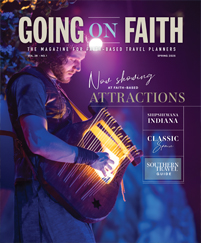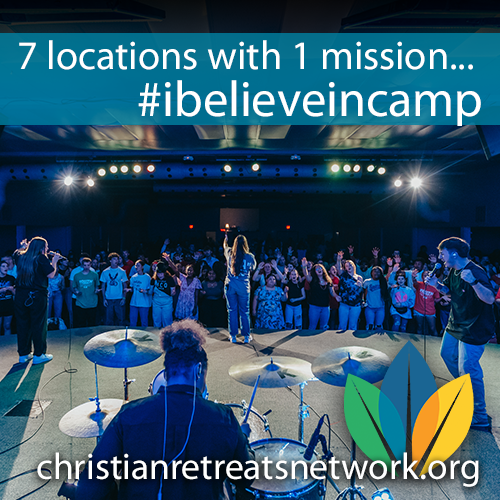The South has produced some of the most courageous and influential figures in American history. Their lives were filled with resilience, vision and a determination to shape the world for the better. Today, their legacies are preserved in museums, historic homes and landmarks where visitors can walk in the footsteps of greatness.
Whether it’s standing at the pulpit where Martin Luther King Jr. preached, touching the famous water pump where Helen Keller first understood language or exploring the fort tied to John Brown’s raid, each stop brings history to life in an unforgettable way.
Here’s a look at some of the most inspiring figures from the Southern states and the places where their remarkable stories unfold.
Martin Luther King Jr. National Historical Park
Atlanta
Atlanta is often called the cradle of the Civil Rights Movement, and no place embodies this history more than the Martin Luther King Jr. National Historical Park. This 35-acre site preserves the places that shaped Martin Luther King Jr., from his humble beginnings to his rise as one of the world’s most influential leaders.
The park encompasses several key sites, starting with King’s childhood home, a modest two-story house where he grew up learning the values of faith, equality and perseverance. Tours of the home, led by National Park Service rangers, transport visitors back to the 1930s and ’40s, offering an intimate glimpse into the environment that shaped King in his younger years.
Just a short walk away, visitors can sit in the pews where King once preached alongside his father at the Ebenezer Baptist Church. Other highlights include the King Center, where visitors can pay their respects at the final resting place of King and his wife, Coretta, and the Freedom Hall exhibition, which displays artifacts from King’s life, including personal letters, speeches and photographs from pivotal moments in the Civil Rights Movement.
Billy Graham Library
Charlotte, North Carolina
A towering figure in modern evangelical Christianity, Billy Graham spent decades preaching to millions around the globe. His simple yet powerful message of faith and hope transcended denominations, making him one of the most influential religious leaders of the 20th century.
The Billy Graham Library in Charlotte offers an immersive look into his life and ministry. Designed to resemble a dairy barn in honor of Graham’s humble beginnings, the library is part museum, part spiritual retreat.
Visitors can explore multimedia exhibits, including rare footage of Graham’s crusades, personal letters and memorabilia from his travels. The Journey of Faith tour takes guests through significant moments in his life, from his calling to his meetings with world leaders. Outside, guests can visit the peaceful prayer garden, where Billy and Ruth Graham were laid to rest.
Group visits are welcomed, with guided tours, private event spaces and special screenings available for church groups and organizations. Seasonal events, including Christmas celebrations, draw thousands of visitors each year.
Ivy Green (Helen Keller Birthplace)
Tuscumbia, Alabama
Helen Keller’s story is one of resilience, determination and triumph over adversity. Born in 1880 in the small town of Tuscumbia, Alabama, she lost both her sight and hearing as an infant. With the guidance of her devoted teacher, Anne Sullivan, Keller shattered expectations, learning to communicate and becoming a trailblazing advocate for people with disabilities.
Visitors to Ivy Green, her childhood home, can explore the beautifully preserved 19th-century white clapboard house, which contains original furniture, family belongings and rare photographs of Keller’s early life. The museum also showcases her Braille books, writing slates and other personal effects.
The most famous spot on the property is the water pump, where Anne Sullivan helped Helen Keller realize that the word “water” represented something real. It remains a powerful symbol of learning and resilience.
Tour groups can reserve guided experiences. During the summer, the site also hosts “The Miracle Worker” outdoor play, a reenactment of Keller’s early years, performed in the very place where her journey began.
Mary Todd Lincoln House
Lexington, Kentucky
Behind every great leader stands a strong partner, and for President Abraham Lincoln, that was Mary Todd Lincoln. Raised in a wealthy Kentucky family, Mary Todd Lincoln was known for her intelligence, political insight and complex personality.
Her childhood home, the Mary Todd Lincoln House in Lexington, provides a window into the life of one of America’s most influential first ladies. The restored 14-room house features period furnishings, family heirlooms, and exhibits detailing her life before, during, and after the White House years.
“This is the first historic site dedicated to a first lady and tells the story of Mrs. Lincoln’s entire life — one that was full of triumphs and tragedies,” said Gwen Thompson, executive director at the Mary Todd Lincoln House. “She was intelligent and vivacious, devoted to her husband and children, and in the national spotlight during the most tumultuous time in our nation’s history. From the deaths of three children to her family being divided during the Civil War, her life was full of drama.”
Guided tours take visitors through Mary’s world, exploring her role in politics, her personal struggles and her lasting impact.
John Brown’s Fort
Harpers Ferry, West Virginia
Tucked into the scenic Blue Ridge Mountains at the confluence of the Potomac and Shenandoah Rivers, Harpers Ferry is a quiet West Virginia town that was once the site of one of the most defining events leading up to the Civil War. It was here, in 1859, that John Brown, a radical abolitionist, led an armed raid on the federal arsenal, hoping to ignite a rebellion against slavery. Though his plan ultimately failed, his actions shook the nation, hastening the divide between North and South.
Perhaps the most famous landmark of the raid is John Brown’s Fort, a small brick firehouse that became the site of his last stand. Today, it serves as a museum and interpretive site for visitors looking to understand Brown’s impact on American history. In addition to exhibits detailing Brown’s raid, its aftermath, and its legacy, the building also offers artifacts, including period weaponry and letters from Brown himself.
For groups and history buffs, ranger-led tours and storytelling programs provide a deeper understanding of Brown’s motivations and the significance of the raid. National Park Service rangers regularly lead walking tours that explore not only the fort but also other key locations tied to the 1859 insurrection, including the armory grounds and the site of Brown’s trial and execution.
Modjeska Monteith Simkins House
Columbia, South Carolina
A champion for social justice, Modjeska Monteith Simkins was a driving force in the Civil Rights Movement in South Carolina. As a teacher, public health advocate and NAACP leader, she fought tirelessly against racial and economic injustice. She played a pivotal role in the South Carolina NAACP and was instrumental in Briggs v. Elliott, a landmark school desegregation case that helped lay the foundation for Brown v. Board of Education.
Her home, a simple yet significant one-story house in Columbia, South Carolina, listed on the National Register of Historic Places, served as a hub of activism and a safe space for those fighting for equality, where she strategized legal battles, hosted civil rights leaders, and fought for justice in an era of profound racial inequality. Today, groups visiting the Modjeska Monteith Simkins House can learn about the pivotal role she and other South Carolina activists played in the early Civil Rights Movement.
“Before Montgomery, Birmingham or Selma became synonymous with the movement, Columbia, South Carolina, and in particular Simkins’ home, played host to organizers and attorneys seeking a legal path to break Jim Crow,” said Kat Allen, director of education and interpretation at the Modjeska Monteith Simkins House.
In addition to original furnishings, historical documents and personal artifacts, the house also showcases personal letters, media interviews, newspapers and boycott flyers that contextualize the courage needed and sacrifices made by Black citizens in hopes of a more equal society.
Guided tours of the house look deep into Simkins’ activism, her collaborations with national civil rights leaders and her impact on South Carolina politics.










